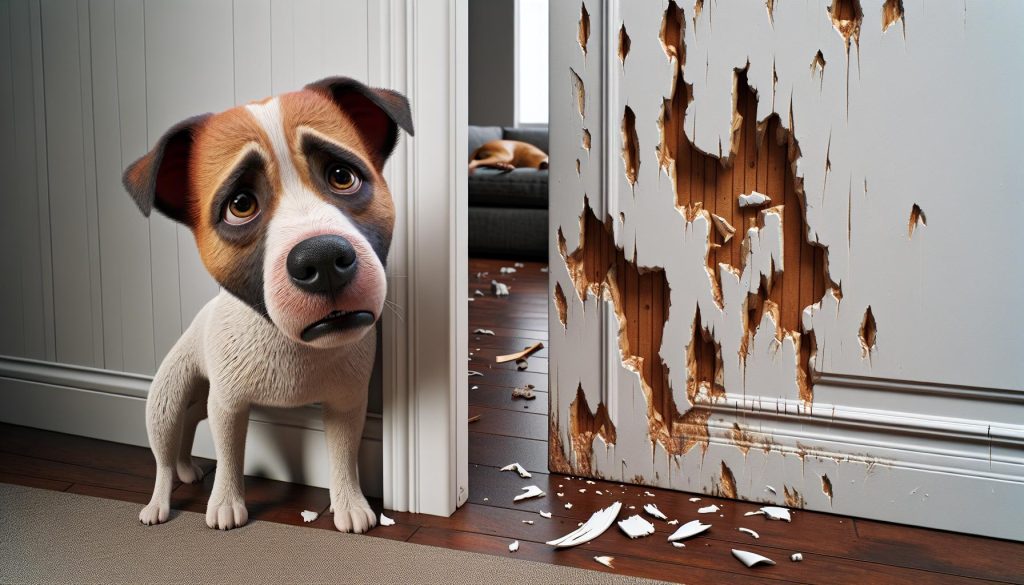Pets play an important role in our lives, not only as companions but also as family members. However, when we have to leave them for a while, pets may experience separation anxiety, a common behavioral problem that requires our attention and treatment.

Pet separation anxiety refers to a series of emotional and behavioral problems that occur when pets are separated from their owners. This anxiety not only affects the health and happiness of pets, but may also lead to some undesirable behaviors, such as yelling, chewing furniture, and irregular bowel movements. Understanding the cause of pet separation anxiety is the first step to solving the problem.
Contents
separation anxiety
At its core, separation anxiety stems from a pet’s strong bond with their owner. Pets, especially dogs, are social creatures that crave companionship and often perceive their human family as their pack. When separated from this pack, they may feel abandoned, leading to stress and anxiety. Changes in routine, lack of mental and physical stimulation, and past traumas can also trigger separation anxiety in pets.
To help pets cope with separation anxiety, owners can turn to various Amazon products designed for this purpose. For example, ThunderShirt – Dog Anxiety Relief Calming Vest provides a gentle, constant pressure that can calm a dog’s anxiety. Similarly, FELIWAY Classic Cat Calming Pheromone helps can alleviate stress by emitting comforting pheromones. Interactive toys like KONG Classic Dog Toy and KADTC Puzzle Toys-Meal-Dispensing Dog Toy can keep pets occupied and mentally stimulated while their owners are away.
KADTC Puzzle Toys-Meal-Dispensing Dog Toy
Identifying the signs of separation anxiety early and taking proactive steps to address them can significantly improve a pet’s quality of life. Implementing gradual desensitization techniques, establishing a safe and comforting environment, and utilizing appropriate products can all play a vital role in helping pets cope with being alone.
For pets with separation anxiety, we must be careful not to act too hastily (such as using arbitrary criticism or even corporal punishment).We need to understand and respect the emotions of pets, and give them enough love and attention. Through our efforts, we can help pets overcome separation anxiety and let them live a happy and healthy life. May the bond between us and our pets become stronger, and spend every wonderful moment together.
Identifying the Signs of Separation Anxiety
Uneasy behavior: Pets may show uneasy behavior, such as pacing back and forth, whining, chewing furniture, etc.

Irregular elimination: Pets may eliminate in inappropriate places because they feel anxious and uneasy.
Loss of appetite: Pets may lose their appetite because they feel anxious and uneasy.
Over-dependence: Pets may become overly dependent on their owners and unable to adapt to independent living.
Physical illness: Long-term separation anxiety may cause physical problems in pets, such as indigestion, insomnia, etc.
If you notice any of the above signs, then your pet may be experiencing separation anxiety. In this case, you should take action as soon as possible to help your pet relieve anxiety and restlessness. Pets can be helped by gradual training, creating a sense of security, exercise and stimulation. If the pet’s separation anxiety is severe, it is recommended to seek help from a veterinarian or professional trainer.
-
Preparing Your Pet for Being Alone
Addressing separation anxiety in pets involves more than just identifying the causes; it also requires proactive steps to prepare them for times when they must be alone. A structured approach, combining training, dedicated products, and establishing a routine, can significantly ease a pet’s stress levels.
Gradual Desensitization is crucial. Start by leaving your pet alone for short periods and gradually increase the time away. This method helps them get used to being alone slowly but surely. During this period, leaving behind items that carry your scent, such as an old T-shirt, can provide comfort.
Ensuring pets have access to engaging toys can distract them from the stress of being alone. The Multipet Plush Dog Toy can serve as companions.
Establishing a routine is also vital. Consistent feeding, walking, and playtimes help pets understand that despite their owner’s absence, they will return. It’s this predictability that can bring a significant sense of comfort to pets dealing with anxiety.
By taking these preparatory steps, pet owners can not only alleviate their pet’s separation anxiety but also foster a more independent and confident furry friend, ready to cope with being alone.
-
Creating a Safe and Comfortable Environment
Creating a safe and comfortable environment is paramount for pets experiencing separation anxiety. A familiar space filled with comforting items can significantly reduce stress levels when they’re alone. Pet owners should consider incorporating products that promote a sense of security and calm.
One key item is the PetSafe CozyUp Folding Pet Steps. These steps allow pets, especially those that are older or smaller, to access their favorite high places safely, such as a couch or bed, where they feel most secure. The PetSafe steps are durable and can support pets up to 150 lbs, making them ideal for a wide range of breeds.
Additionally, Calm House Pet Calming Bed offers pets a plush and comfortable spot to rest. Designed to mimic the fur of a mother, the bed helps reduce anxiety by providing a comfortable and warm place for snuggling. This bed can be especially beneficial for pets that crave closeness when their owner is away.
Investing in a Furbo Dog Camera is another excellent way to ensure pets feel connected even when alone. The camera comes with a two-way audio system and a treat-tossing feature, allowing owners to interact with their pets remotely. This can help alleviate the sense of abandonment pets might feel, reinforcing the bond between pet and owner despite physical separation. The Furbo Dog Camera is accessible here.
-
Exercise and training
① Give your pet plenty of exercise and stimulation before leaving to reduce anxiety. For example, you can take your pet out for a walk or play to let them burn off energy and focus.
② Training your pet to follow certain commands, such as “stay on the bed” or “sit down,” can make your pet feel safe and protected. These commands can also distract your pet and reduce anxiety.
-
Seeking Professional Help
If your pet’s separation anxiety is severe, you can seek help from a veterinarian or professional trainer. They can provide more professional advice and guidance to help your pet relieve anxiety and restlessness.When dealing with separation anxiety in pets, it’s crucial to recognize when professional help is needed. If a pet’s anxiety symptoms persist despite trying various products and strategies, consulting with a veterinarian or a certified animal behaviorist can be instrumental. These professionals offer specialized knowledge and can prescribe medication or tailor behavioral modification programs that address the unique needs of each pet.

In short, solving pet separation anxiety requires our patience and attention. We should understand the causes and signs of pet separation anxiety and take corresponding measures to help pets relieve anxiety and restlessness. Through our efforts, we can help pets overcome separation anxiety and let them live a happy and healthy life.

